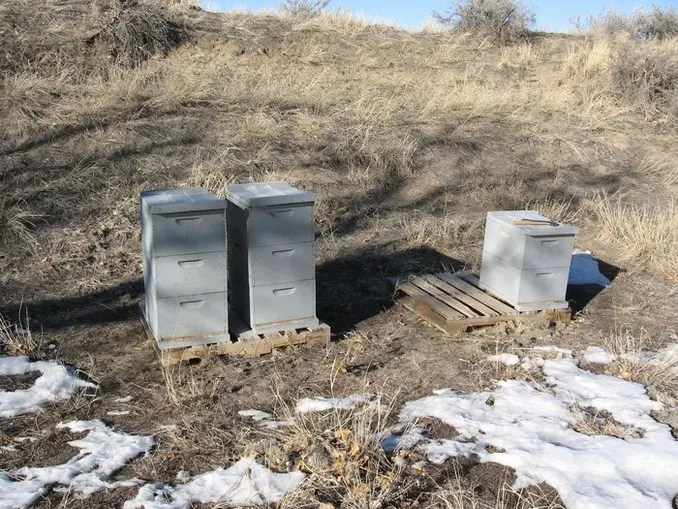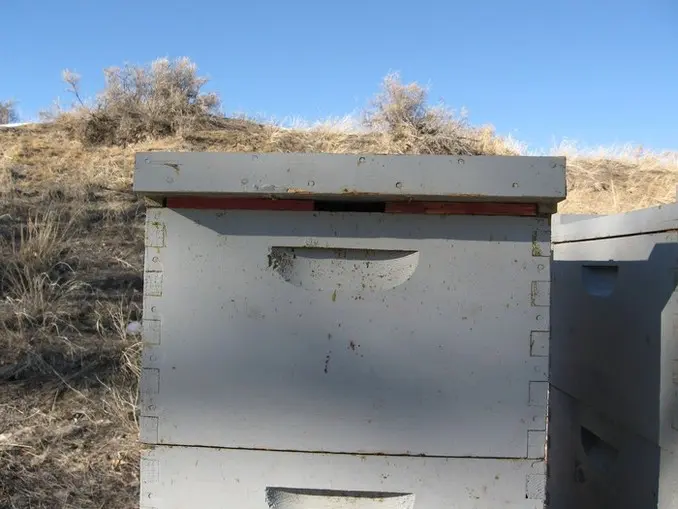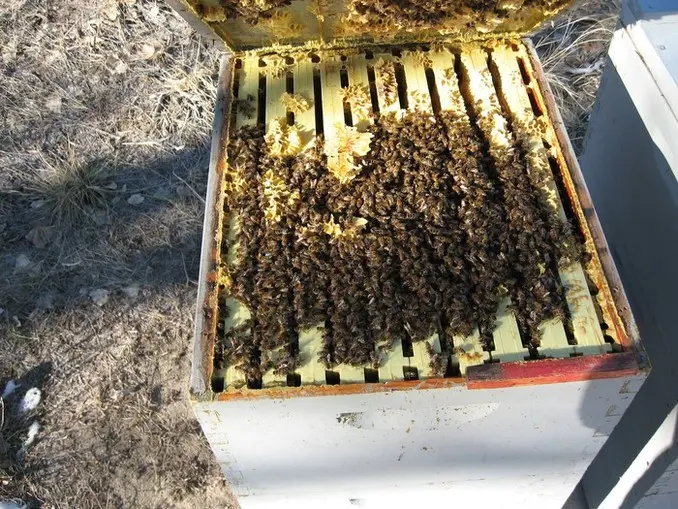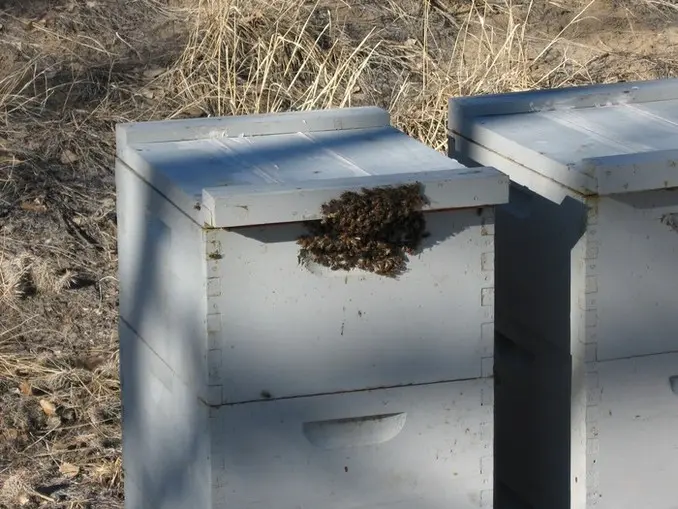Year 7 January - Embracing Winter's Calm 🖊️

-The beeyard is in good shape.
January’s Tranquility: A Beekeeper’s Midwinter Check
Ah, what a beautiful January day it is:
- The temperature gracefully sits above freezing.
- No pesky winds disturb the peaceful air.
- The sun casts its radiant glow.
- The roads are invitingly accessible.
Curiosity nudges me to check how the bee cluster is navigating around the upper entrance. I wonder if the recent blowing snow or condensation has left any traces inside the hive.
Thus, it’s time for a brief visit to the yard:
- A silent reminder not to disturb them; it’s too cold.
- Scout for signs of winter damage.
- Gently pry open one cover.
The Yard

-Behold, the upper entrance.
The yard unfolds before me, a serene haven. No:
- Toppled hives in disarray.
- Covers whisked away by the wind.
- Hints of skunk or raccoon mischief.
- Evidence of troubling dysentery.
This marks my debut season with upper entrances. The cover boasts a migratory bottom board affixed to the top box, its entrance partially restricted. On the hive’s bottom rests another migratory bottom board with a completely restricted entrance. No other vent holes or shims are in sight.
Recalling January 2013, when skunks seemed more numerous than bees, their tracks everywhere, and the stench unbearable, I breathe a sigh of relief at the contrast this year.
The Cluster

-A January cluster within a hive flaunting an upper entrance.
With a gentle lift of a cover, here’s what I discovered:
- The cluster snugly positioned in the upper box near the entrance.
- A perfectly sized cluster.
- Happy and healthy bees sporting a vibrant color.
- Activity buzzing within.
- A delightful beehive aroma.
- No signs of excessive moisture on the lid or in the frame rest areas.
- Zilch mildew or mold.
- No small, crispy, dehydrated bees hinting at water scarcity.
- Abundant sealed honey residing behind the cluster in the top box.
- The hive weight signaling ample honey stores below.
This hive appeared splendid. Granted, it’s a quick glimpse of the hive’s top, but it aligns with my hopeful expectations.
Yet, it’s early in the Wyoming winter season. Brood rearing hasn’t kicked into full gear, and any significant food concerns are still over two months away when active brood rearing precedes available forage. Surprises may unfold in due time.
Upper Entrances

-A few bees bidding adieu as I depart.
I’m completely won over by upper entrances. They’ve seamlessly woven into my beekeeping routine, eliminating the need for a dedicated cover.
Adapting to a cluster in the top box prompts me to pick up some new tricks. Perhaps a hive with an upper entrance might even checkerboard itself, simplifying early spring management.
And inspecting a brood nest atop a three-story hive? Significantly easier than delving into one at the bottom.
Only time will reveal the full story.
Farewell
In a month or so, I’ll make my return. While early winter visits lend support to needy hives, it’s this beekeeper who reaps the greatest rewards. ✨
-Bundled up in winter’s serenity, D 🌨️🐝
